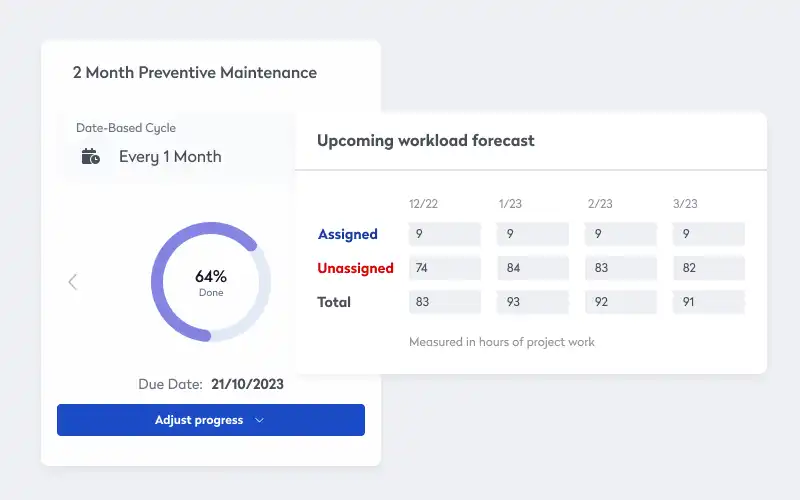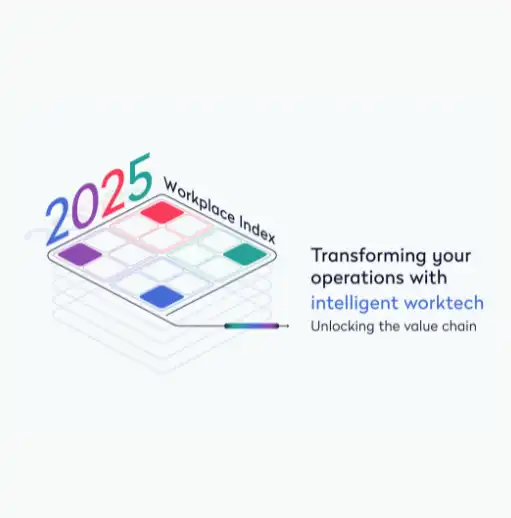
Facility teams need to stay ahead of preventative maintenance, monitor inventory in real time, meet compliance standards, and respond quickly to issues across different buildings, cities, or even countries.
Cloud facility management platforms are purpose-built for this challenge. They provide a centralized, scalable way to keep operations running smoothly no matter how many locations you oversee or how far apart they are. Unlike traditional on-premises systems, which are tied to individual servers or physical sites, cloud-based tools give you the visibility, control, and flexibility to manage everything from one connected platform.
Cloud technology doesn’t just modernize facility management; it transforms how multi-site teams work together. And while cloud isn’t the right fit for every organization, it’s often the most strategic choice for companies looking to scale, standardize, and strengthen operations across locations.
Why cloud-based FM is best for multi-facility operations
Cloud facility management systems give your team access to real time data from anywhere, on any device. This means you can monitor equipment, assign work orders, and track maintenance schedules from a single platform, even if your sites are in different states or time zones.
When all your facilities operate under one system, you reduce the risk of inconsistent processes, duplicated inventory, or missed maintenance. The cloud supports centralized facility oversight, so you can create standardized procedures across locations and still allow for local customization where needed.
This kind of alignment is especially valuable for enterprise teams with a mix of office buildings, warehouses, and remote facilities. Everyone, from on-site technicians to regional managers, works from the same source of truth, helping reduce delays and improve communication.
Managing multiple facilities with close technology
With intelligent facility management solutions, tasks that once required spreadsheets, phone calls, or disconnected systems can now be automated and integrated.
Facility and maintenance managers can leverage the software to:
- Update preventative maintenance schedules in real time and receive alerts and escalations across all locations
- Instantly reflect inventory changes across the platform when teams use parts at any site
- Submit, assign, and close work orders from mobile devices even in the field. They can review, approve, prioritize, assign, and track them, while maintenance techs can access and close out work orders
- Generate performance reports by location or roll them up across the entire portfolio
The result is more visibility, fewer silos, and faster data-driven decision-making. For facility managers, this means better control over daily operations and a lower risk of missed work.
The benefits of cloud migration for facility managers
Migrating to cloud facility management software delivers a number of long-term advantages, especially for organizations that are growing, restructuring, or consolidating facility operations.
Cross-location visibility
Gain a system wide view of assets, maintenance status, work order volume, and team performance. With the right dashboarding tools, you can drill down to the details or zoom out for strategic oversight.
Standardization and consistency
English company-wide processes reporting methods, and data structures while allowing local flexibility. This supports better benchmarking and compliance tracking across your portfolio.

Lower IT overhead
Updates, security patches, and backups are managed by the provider. Your internal teams spend less time maintaining software and more time supporting operations.
Scalability
Add new locations or scale your operations without reconfiguring infrastructure. Cloud platforms make it easy to bring additional buildings or teams into the system. This means no new servers or local installations are required.
What to consider with cost, security, and implementation
Cloud facility management offers powerful advantages. It’s important to evaluate how it aligns with your operational needs.
Cost
Cloud software is typically subscription-based (SaaS), which spreads cost over time rather than requiring a large upfront investment. For multi-site operations, the model can be more cost effective, especially when factoring in the reduced need for in-house infrastructure and IT support.
Security
Leading cloud providers follow strict security protocols, with data encryption, multifactor authentication, and compliance with standards like SOC 2 or IOS S27001. In many cases, cloud platforms offer more robust protection than on-premises systems managed internally.
Implementation
Cloud systems can be deployed faster than on-premises systems, often with remote onboarding and phased rollouts. However, successful implementaiton depends on proper planning, including data migration, user training, and process alignment across sites.
The difference between configurable vs. customizable
Cloud platforms are typically configurable, meaning they can be adjusted to your workflows using built in tools such as dashboards, form templates, roles, and automation, without writing new code. Supports flexibility at scale while maintaining platform integrity.
On-premises systems are usually customizable, allowing for deeper changes to code, integrations, and architecture. While this may be necessary in highly regulated or complex environments, it requires significant IT resources to maintain and scale.
When on-premises still makes sense
It isn’t the answer for every team, but on-premises software may still be appropriate if your organization:
- Requires full control over data hosting and storage due to regulatory mandates
- Has highly specialized workflows or legacy integrations that cloud systems can’t yet accommodate
- Operate in high-security environments where Internet access is restricted or unavailable
For these use cases, customizable on-premises systems allow deeper control but often at the cost of agility and scalability.
Future-proofing facility management operations
Multi-site facility management demands flexibility, consistency, and real-time collaboration. These are all challenges that cloud-based solutions are designed to meet. By providing centralized oversight, scalable infrastructure, and streamlined communication across locations, cloud facility management platforms help teams move faster, stay aligned, and operate with greater confidence.
As facilities grow or evolve, cloud technology gives you the foundation to adapt without compromising control, visibility, and accountability.






